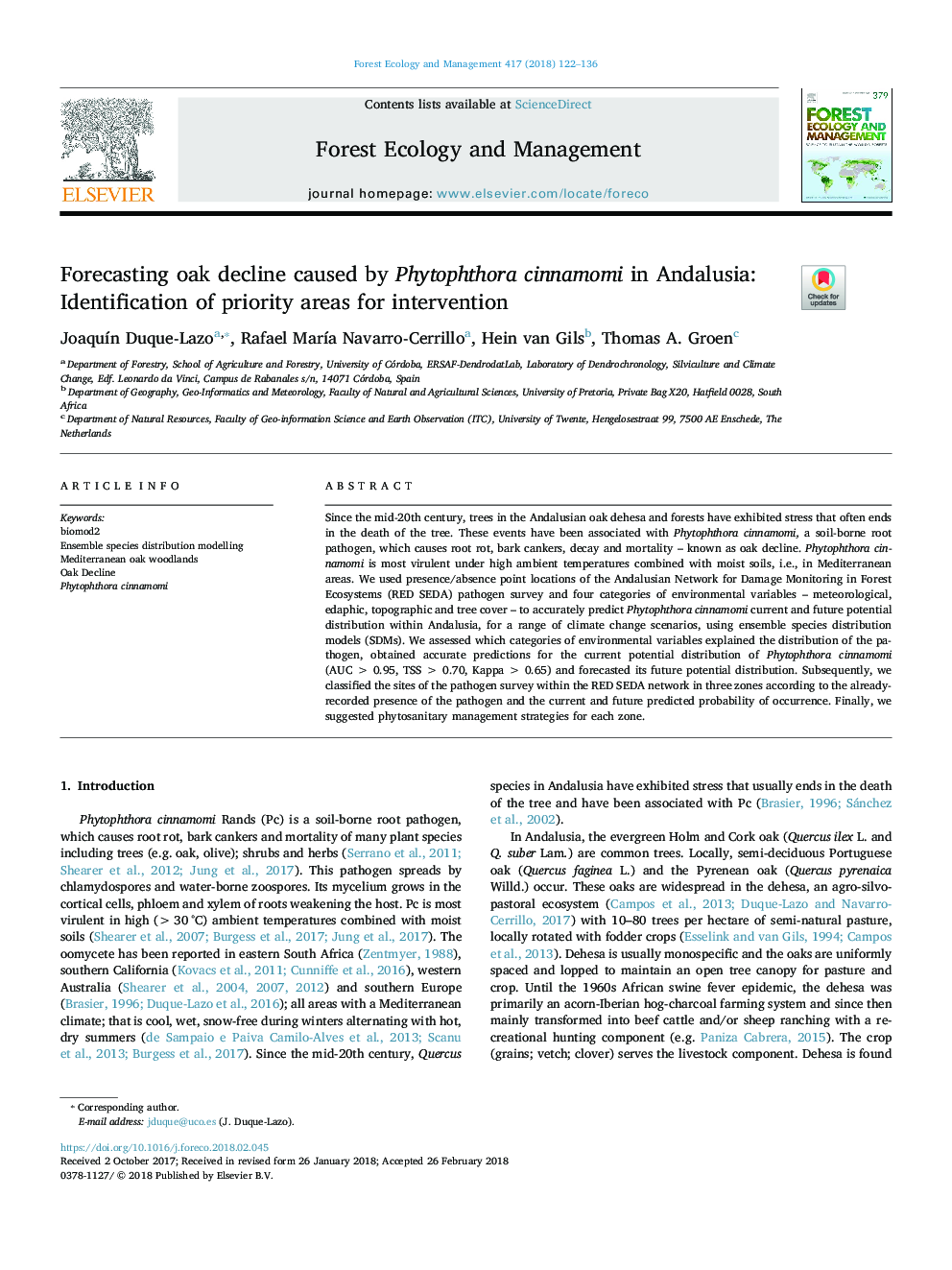| Article ID | Journal | Published Year | Pages | File Type |
|---|---|---|---|---|
| 6541748 | Forest Ecology and Management | 2018 | 15 Pages |
Abstract
Since the mid-20th century, trees in the Andalusian oak dehesa and forests have exhibited stress that often ends in the death of the tree. These events have been associated with Phytophthora cinnamomi, a soil-borne root pathogen, which causes root rot, bark cankers, decay and mortality - known as oak decline. Phytophthora cinnamomi is most virulent under high ambient temperatures combined with moist soils, i.e., in Mediterranean areas. We used presence/absence point locations of the Andalusian Network for Damage Monitoring in Forest Ecosystems (RED SEDA) pathogen survey and four categories of environmental variables - meteorological, edaphic, topographic and tree cover - to accurately predict Phytophthora cinnamomi current and future potential distribution within Andalusia, for a range of climate change scenarios, using ensemble species distribution models (SDMs). We assessed which categories of environmental variables explained the distribution of the pathogen, obtained accurate predictions for the current potential distribution of Phytophthora cinnamomi (AUCâ¯>â¯0.95, TSSâ¯>â¯0.70, Kappaâ¯>â¯0.65) and forecasted its future potential distribution. Subsequently, we classified the sites of the pathogen survey within the RED SEDA network in three zones according to the already-recorded presence of the pathogen and the current and future predicted probability of occurrence. Finally, we suggested phytosanitary management strategies for each zone.
Related Topics
Life Sciences
Agricultural and Biological Sciences
Ecology, Evolution, Behavior and Systematics
Authors
JoaquÃn Duque-Lazo, Rafael MarÃa Navarro-Cerrillo, Hein van Gils, Thomas A. Groen,
